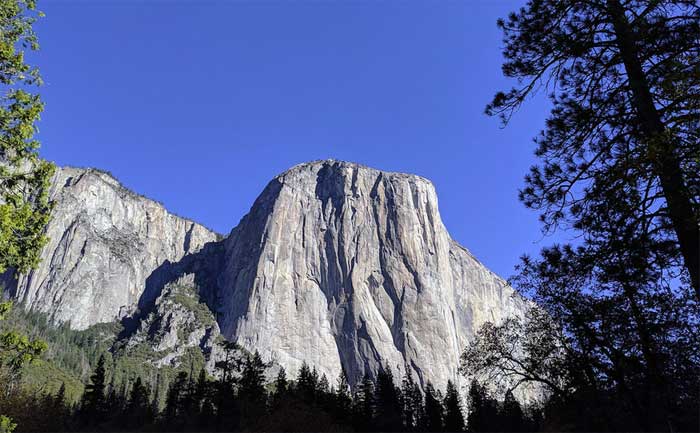Located in the western Sierra Nevada of California, Yosemite National Park is a United States national park known as one of the best rock-climbing destinations in the world. Covering an area of 747,956 acres, the park is internationally celebrated for its granite cliffs, waterfalls, clear streams, giant sequoia groves, lakes, mountains, meadows, glaciers, and biological diversity.
Listed as a World Heritage Site in 1984, the park is one of the largest and least fragmented habitat blocks in the Sierra Nevada, supporting a diversity of plants and animals. In fact, nearly 95 percent of the park is designated wilderness. With an elevation range from 2,127 to 13,114 feet, the park houses five major vegetation zones: chaparral and oak woodland, lower montane forest, upper montane forest, subalpine zone, and alpine.
While California is home to 7,000 plant species, 50 percent of this figure occur in the Sierra Nevada and more than 20 percent within Yosemite. The park provides a suitable habitat for more than 160 rare plants in the park, with rare local geologic formations and unique soils characterizing the restricted ranges many of these plants occupy.
Yosemite Park attracts nearly 4 million visitors every year, and in 2016 it set a record by surpassing 5 million visitors for the first time in its history. The park takes its name from the Miwok language, meaning “killer”. This refers to the name of a renegade tribe which was driven out of the area (and possibly annihilated) by the Mariposa Battalion. Before that happened, the area was called “Ahwahnee” by indigenous people, which means “big mouth”.
The park is home to the shockingly sheer 3,000-foot Dawn Wall of 7,569-foot El Capitan, the popular 8,839-foot-tall Half Dome, and easier summits such as Washington Column, with its 1,000-foot rout.
If you want to climb the summits, booking a tour with the Yosemite Mountaineering School & Guide Service is your best bet. Ever since the late 1960s, the Yosemite Mountaineering School has guided tens of thousands of climbers, ranging from novice to experts. “Our guides are the only ones authorized to lead and teach climbing at Yosemite National Park. They're passionate climbers, patient teachers and know Yosemite's cliffs better than anyone. Every guide is a wilderness First Responder or holds a Wilderness EMT certification,” states the school's official website.
You need to call the Mountaineering school to make a reservation. Classes are generally seven and a half hours long and start at 8.30am at the Mountaineering School in Half Dome Village or in Tuolumne Meadows.
Lessons options vary from beginners to intermediate and expert levels. The beginner lesson option is called Welcome to the Rock and it costs $172.00. “Designed for beginners, you'll learn the basics, as you begin climbing and repelling at heights up to 60 feet. Our expert guides make it a fun and memorable experience, with safety as the first priority.”
Intermediate lessons are known as Crack Climbing, and they cost $175.00. “The second class in our series focuses on different climbing techniques, expanding on what you learned in the first class. You'll learn the basics of crack climbing, protection techniques and simple anchors. Throughout the day, you'll be climbing and repelling under the watchful eye of our expert guides.”
Another intermediate lesson is called Anchoring and is also priced at $175.00. “The third class in our series is essential for anyone who someday hopes to climb on their own. It's also excellent for helping you assess your partner's abilities and confidence. This intensive class focuses on anchoring techniques, covering top-rope and more advanced anchors. Anchoring is the most fundamental and essential skill for climbing safety.”
The advanced lesson, Leading/Multi-Pitch Climbing, is priced at $215.00, and “will cover leading and multi-pitch climbing. Your expert instructor will teach you the techniques used to get the rope up and continue past one rope length. Once you learn to lead, you'll be the one responsible for orchestrating the pitch, protecting for the follower, aiding moves and leading strategies. It's critical that anyone who hopes to climb without an instructor takes this course.”

